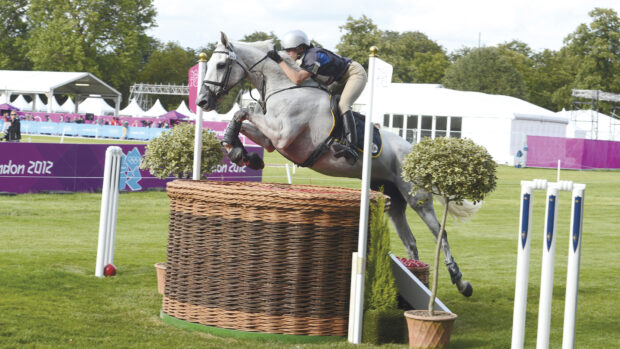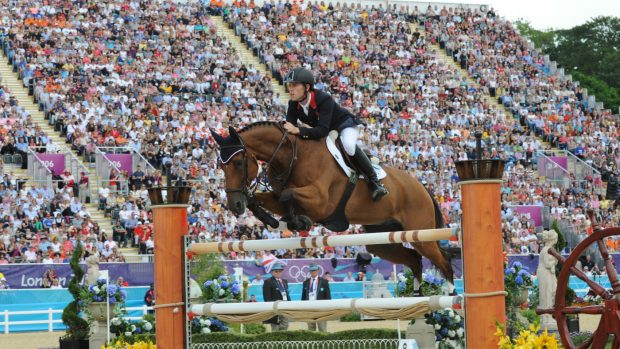The red pillar box that featured in the showjumping and eventing competitions at this summer’s London Olympics caused no end of trouble.
It was responsible for medals won and lost and was the subject of much discussion among those in the know.
The fence went on to feature at Burghley and then Horse of the Year Show (HOYS), where it also proved influential.
There is some science to explain why this might be.
Studies of equine colour perception indicate that horses possess dichromatic vision, which allows perception of greens and yellows, and blues and greys.
They do not see reds — this colour will appear to them grey or neutral.
This means that horses may experience difficulty in identifying red objects, for example a solid or mono-coloured red fence on a showjumping course.
This is likely to be particularly marked in poor lighting conditions, where the backdrop is “busy” or where the object is static and its appearance or design does not create sufficient contrast for recognition.
In these circumstances, it would be easy for the horse to make visual misjudgements.
Further, the density of cones (colour receptors) in the equine retina is significantly reduced compared with a human’s.
This means horses are likely to see colours as being desaturated or washed out.
This is particularly the case in the peripheral visual fields, suggesting that how a horse perceives colour contrast on the margins of his vision may be significantly reduced.
Turning too tightly into a red obstacle is therefore risky, as the horse may fail to identify the fence immediately.
Interestingly, at Burghley, the pillar box fence was situated off of a sharp left-hand turn. Clear presentation was key.
Knowing how and what horses see is useful only if we use it to influence their ability to meet the challenges of domestication and athletic demand.
It will be interesting to see how this increasing body of knowledge is used in the future.
To read the full veterinary article about how horses see colour see the current issue of H&H (29 November 2012)
Read more articles about horses’ vision



